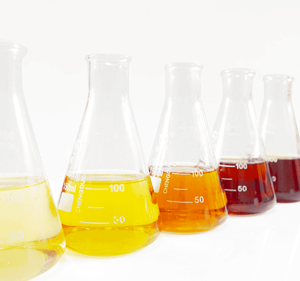目录
ToggleCaramel food color is now a staple ingredient in kitchens and commercial food production worldwide, enhancing the appearance of countless dishes, desserts, and beverages. Unlike synthetic dyes, it is derived naturally through a controlled heating process that caramelizes sugars, resulting in a rich amber hue. This natural origin makes it a top choice for foods requiring a golden-brown tint that feels authentic and visually appealing. Let’s explore how it is created, its main uses, and its cultural influence on global cuisine.

How Caramel Color Liquid is Made
The making of caramel food coloring involves controlled heating applied to sugars, turning them into thick, dark syrup. By adjusting the temperature, timing, and sugar type, food scientists can achieve different shades and intensities, which allows chefs and food producers to select the best option for each application. They come in four main classes:
- Class I– Simple and clean, often used in baked goods.
- Class II– Used in select beverages for their mild color and flavor.
- Class III– Known for darker tones, perfect for gravies and spice mixes.
- Class IV– The darkest and strongest, best suited for sauces and condiments.
Each class has unique applications that can add visual depth to food without synthetic additives, making it a favorite for those seeking natural ingredients.
Uses of Caramel Food Color in Popular Dishes
In savory dishes, it’s often used to enrich the color of soups, stews, and sauces, adding a rich, dark tone for visual appeal. Spice blends and gravies also gain a more authentic look.
In sweet recipes, it’s found in chocolates, dessert sauces, and syrups, while pastry chefs add it to baked goods like cookies and cakes. This touch of color gives foods a warm, inviting appearance, aligning with the idea that caramelized foods offer more flavor.
Caramel Food Coloring Cultural Influence
Around the world, food color plays an essential role in traditional cuisine. In Asian cooking, it’s an integral ingredient in stir-fry sauces and glazes, providing a deep, glossy finish that adds to the dish’s appeal. Caribbean and Latin American cuisines often incorporate it in marinades, allowing meats and vegetables to achieve a beautiful, golden hue. This color variation brings authenticity and visual richness, especially in dishes where presentation is as important as taste.
Health Considerations
While caramel food color is generally safe, its classification is essential when selecting a type for specific recipes. Classes I and II are considered cleaner and more natural, often preferred by consumers aiming for “clean label” products. Meanwhile, Classes III and IV may contain compounds introduced during processing, but these are still considered safe under FDA and international food guidelines. As a result, it remains widely accepted for both traditional and modern culinary applications.
Conclusion
Caramel food color serves a significant role in food presentation, adding depth, warmth, and appeal to a wide range of cuisines. Its natural origins and ability to create various shades make it a valuable choice for chefs, bakers, and food manufacturers alike. From savory dishes to sweets, it continues to be an essential tool in crafting visually stunning foods that meet both traditional and contemporary expectations.
0